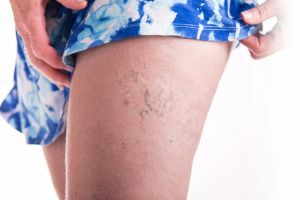 Many women with age on their legs appear edema, as well as a set of capillaries. These are the signs of a beginning varicose veins. How dangerous is this phenomenon?
Many women with age on their legs appear edema, as well as a set of capillaries. These are the signs of a beginning varicose veins. How dangerous is this phenomenon?
Capillary mesh( telangiectasia) occurs due to impaired vascular function. This is the earliest sign of varicose veins.
Looks like a violation, like a network of capillaries of reddish and blue. The walls of the pathologically altered vessels thus become more visible and appear through the skin. A bright cobweb-like grid can disfigure even the most beautiful and slender legs. Therefore, every woman wants to get rid of such a defect.
The peculiarity of the capillary grid is that it manifests itself imperceptibly. Only after a while this process still signals about itself some discomfort, a feeling of heaviness in the legs, itching, burning.
And if at this stage do not visit a doctor and do not start treatment, then this disease will progress, which threatens the development of varicose veins.
Contents
- Causes of the disorder
- Clinical picture
- Varieties of violation
- From the grid to the varicose veins - one step
- Approach to therapy
- Folk remedies
- What is fraught?
- Prophylaxis
Causes of
Violation The main causes of the emergence of the capillary mesh are:
- hormonal dysfunction;
- excessive sunbathing;
- pregnancy;
- reduced vascular elasticity;
- hypothermia( especially for girls);
- venous insufficiency;
- respiratory failure;
- long-term use of hormonal contraceptives;
- is an enetic location.
Predisposing factors are: 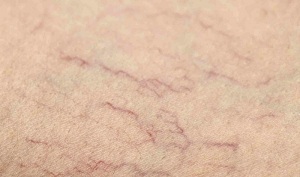
- excessive physical exertion;
- smoking;
- strong emotions( both positive and negative);
- abuse of alcoholic beverages;
- excess weight.
Clinical picture
First of all, a person discovers a mesh of capillaries on the lower extremities. The dilated blood vessels may have a different color, but the most common are capillaries of blue, red, purple. Their shade can vary. Often the grid can be convex.
Often the thin and red 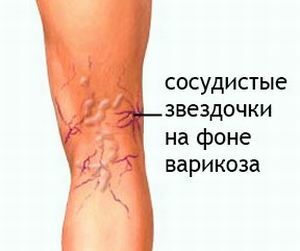 both expand and change its coloration to violet. This is due to the transfer of blood from the veins.
both expand and change its coloration to violet. This is due to the transfer of blood from the veins.
Usually the capillary grid on the legs is long and does not show itself. However, it often happens that these seemingly innocuous formations begin to burst.
The main reason for this phenomenon is the weakness of the capillary grid. It is these thinnest vessels that can not withstand tension.
The excessive load on the legs plays an important role in the rupture of telangiectasias. This increases venous pressure. These processes automatically increase the pressure in the capillary bed as well.
The main causes of abnormality of capillaries are:
- increased fragility of blood vessels;
- low platelet count in the blood( this inevitably leads to a disruption in the integrity of the vascular wall);
- liver disorders( many of them are accompanied by thrombocytopenia);
- increased physical activity;
- some endocrine disorders( in particular, diabetes mellitus).
Varieties of violation
The grid, as a rule, consists of expanded capillaries of red and blue. The classification of such a grid is based on which vessel is affected.
Therefore, there are arterial, venous and capillary meshes. They can create a different pattern: in the form of a strip, tree, spider, and also focus on the skin of the legs in the form of multiple small points. From the capillaries and arterioles, reddish-colored nets are formed. Conversely, from the venule most often appear formations of blue.
Nevertheless, no matter what pattern they form, the approach to their treatment and removal is the same.
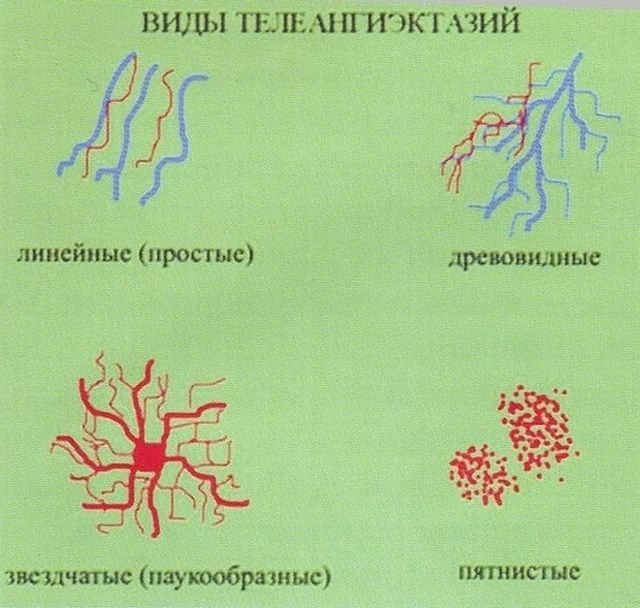
From mesh to varicose veins - one step
The vascular asterisks in themselves do not pose a danger to a woman. However, their appearance signals the presence in the body of serious health problems. In particular, this is a high risk of developing varicose veins. Anyway, the appearance of the reticulum is a sign that something is wrong with the tone of the blood vessels.
If you do not strengthen the intradermal capillaries, do not take preventive measures to prevent varicose veins, then it may soon appear.
It is necessary to consult a doctor in such cases:
- if many foci of capillary lesion appear;
- when there is pain in the place of the mesh;
- if there is periodic swelling and heaviness in the legs;
- with deterioration of the general condition of the body, as well as with the emergence of increasing weakness.
Approach to therapy
Most often, sclerotherapy is used to get rid of the capillary mesh on the legs. A substance is injected into the affected vessel, which 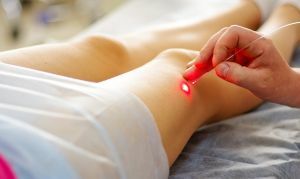 is able to glue its walls. Through such a vessel, blood does not flow, and the manifestations of vascular nets gradually disappear. A great value for the removal of the vascular network is laser coagulation.
is able to glue its walls. Through such a vessel, blood does not flow, and the manifestations of vascular nets gradually disappear. A great value for the removal of the vascular network is laser coagulation.
Diathermocoagulation is the effect on the affected area of the capillaries by high-frequency electric current. This current heats the tissues to a safe temperature at which protein coagulation takes place( and this phenomenon is irreversible).In this case, the wall of the vessels shrinks and thromboses it.
As a drug, Ascorutin is used. It strengthens the vessels well. It is also useful to wear compression knitwear to prevent the further spread of the pathological process.
In order to cure a capillary mesh, it is often necessary to treat the underlying disease that caused it. For example, if the hormonal level of the organism is not corrected, then it is not necessary to hope for a rapid disappearance of the capillary network. After the treatment the vascular network will reappear at its former place.
Folk remedies
Traditional medicine has methods to help get rid of the nets of capillaries on the legs. Here are some of them.
- Grind grape berries ( better - blue) and attach them to the affected area.
- The same can be done by stretching red currant berries .
- Add to your favorite cosmetic milk a little of jojoba oil .The resulting mixture can slightly lubricate the affected areas of the body.
- Apple vinegar is an excellent remedy for the treatment of leg teleangiectasias. They are wiping patches on their feet with nets. For the night, attach a cabbage leaf to the skin and fasten it with a bandage.
What is fraught with?
 As already defined above, a capillary mesh on the legs contributes to the development of varicose veins.
As already defined above, a capillary mesh on the legs contributes to the development of varicose veins.
Do not treat this disease only as a cosmetic defect.
Its complications are much more serious:
- promotes the development of trophic ulcers ;
- leads to thrombophlebitis - a disease that threatens the development of thrombosis of the saphenous vein;
- threatens with a ruptured varicose vein ( there may be quite a lot of blood loss);
- promotes the development of venous insufficiency .
Preventive measures
The prevention of this disease is as follows:
- wearing comfortable shoes;
- avoidance of hypothermia and prolonged sun exposure;
- wearing season clothes;
- alternation of work and rest;
- adequate motor activity;
- correction of hormonal imbalance.
Remember that vascular reticulums on the legs are easy to prevent, but to remove the capillary net on the legs is much more difficult.
